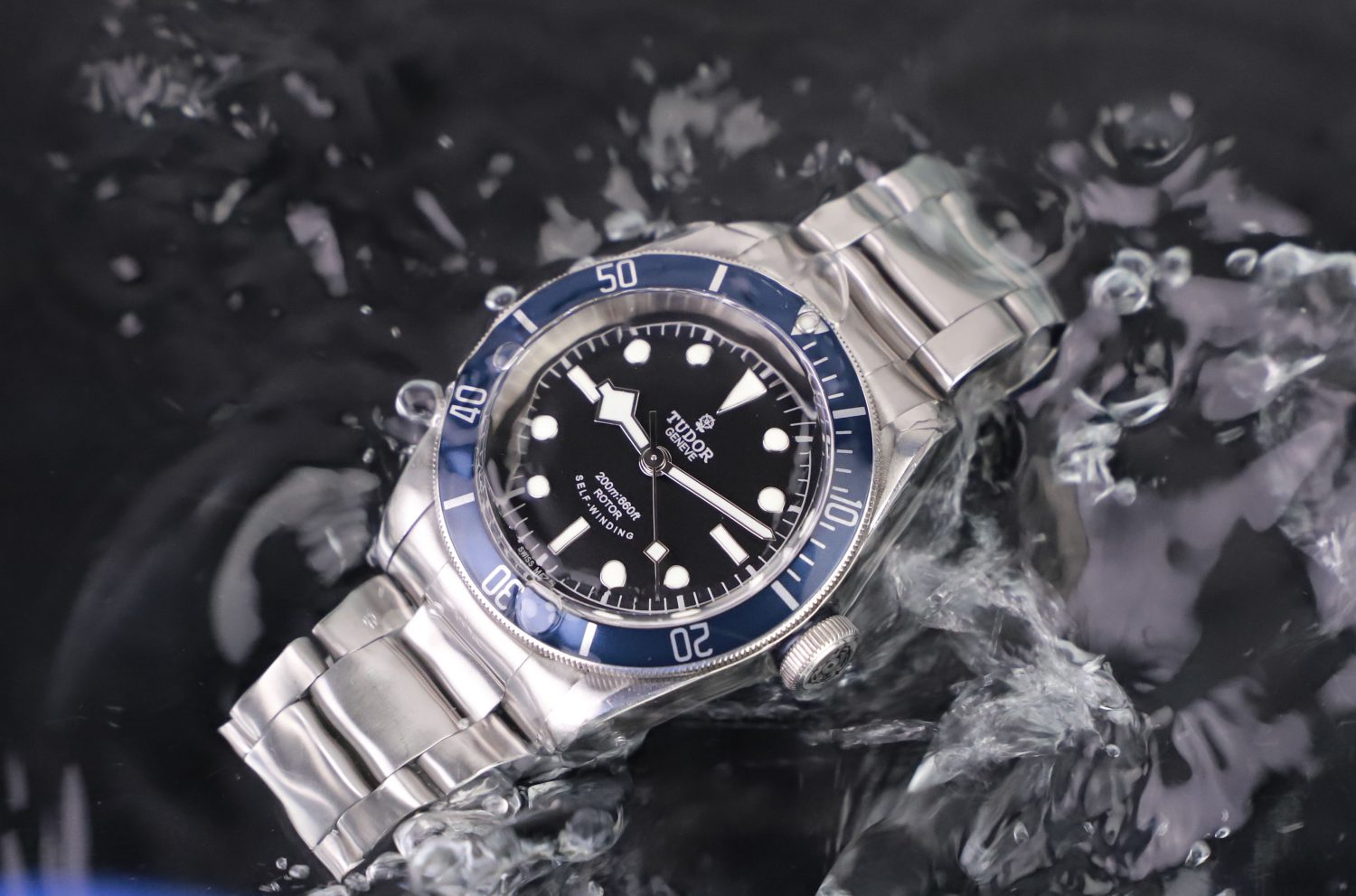
Watch Water Resistance: What Does it Mean?
Have you ever thought about, and been confused about watch water resistance?
On wristwatches, you can usually read their water resistance on the dial and/or case back, but what does it really mean?
The most important reason we’re writing this article is to prevent you from making any mistakes with your wristwatch when in contact with water because if a watch says, for example, 30 meters of water-resistance, many people assume that they can swim with their watch without any problem since when swimming, you don’t submerge your watch more than one meter or so.
But this is a big mistake and a huge misconception when it comes to the water resistance of watches.
Now, over the years, the demand for water resistance in watches has increased. People expect their watches to be water-resistant, and with better skills and technology, brands are able to make watches that have higher water resistance, but also have water resistance which is more reliable.
In this article, you’ll learn everything you need to know about watch water resistance, and what the water-resistance number on your watch actually means.
Watch water resistance
It may not come as a surprise, but the meters it says on your watch are not the meters you can submerge your watch to.
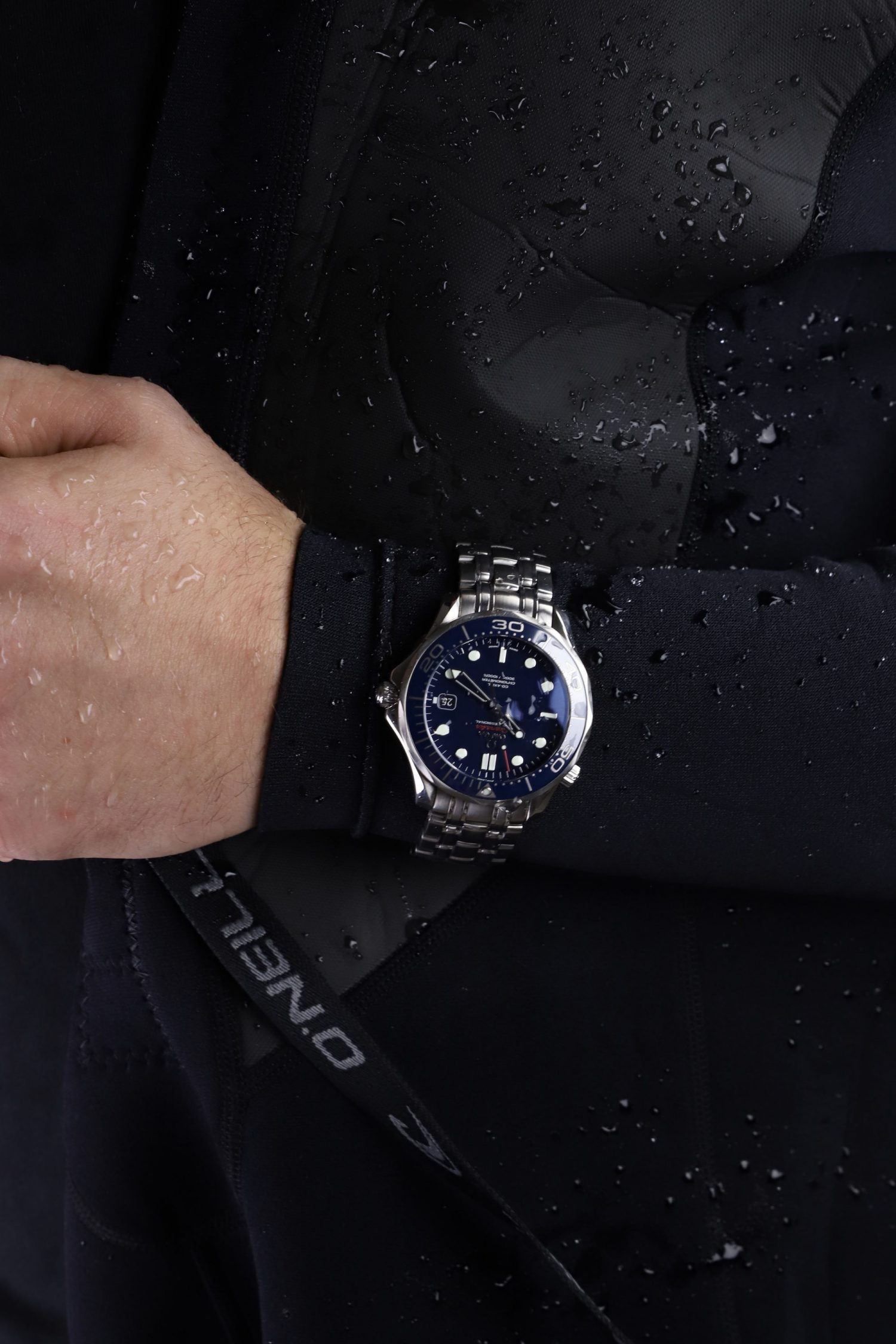
For example, if your watch says 100m water resistance, it doesn’t mean that you can dive to 100M with your watch. In fact, if you do, it may break.
But why does it say a number on the dial which actually doesn’t work in practice? Well, the water-resistance number of your watch is a reflection of a standardized water-resistance classification. But more importantly, the water resistance of your watch refers to the pressure that X meters below the surface represent. But obviously, as soon as you move your watch a little, the pressure on the watch increases, which may cause it to break.
Water resistance in a watch can be specified with several different units. The ones you see the most often are meters, feet, but also in units of pressure such as bars or atmospheres.
It’s important to note that a watch’s water resistance unless it’s a serious dive watch, does not refer to being able to withstand activity for a longer time in the water or a swimming pool.
When the watch manufacturer decides on the watch’s water resistance, the test is done using static pressure on new watches. There are two catches with this. First off, after a while of owning and wearing your watch, you can not be completely sure that the watch is still water-resistant. The other thing is that the tests are done statically, which means that they’re not tested to how you would actually wear them in practice, which is with movement.
Water vs watches
It’s not the biggest secret that watches are one of the greatest enemies against watches. This is quite interesting, because today, a lot of watches are water-resistant, and people expect them to be. But after all, this is because of what water does to watch which has forced watch companies to develop watches that are water-resistant.
If a watch gets water inside, the water will start the process of rusting on the movement, and the water will also tends to reach the dial, and speed the process of aging and rusting.
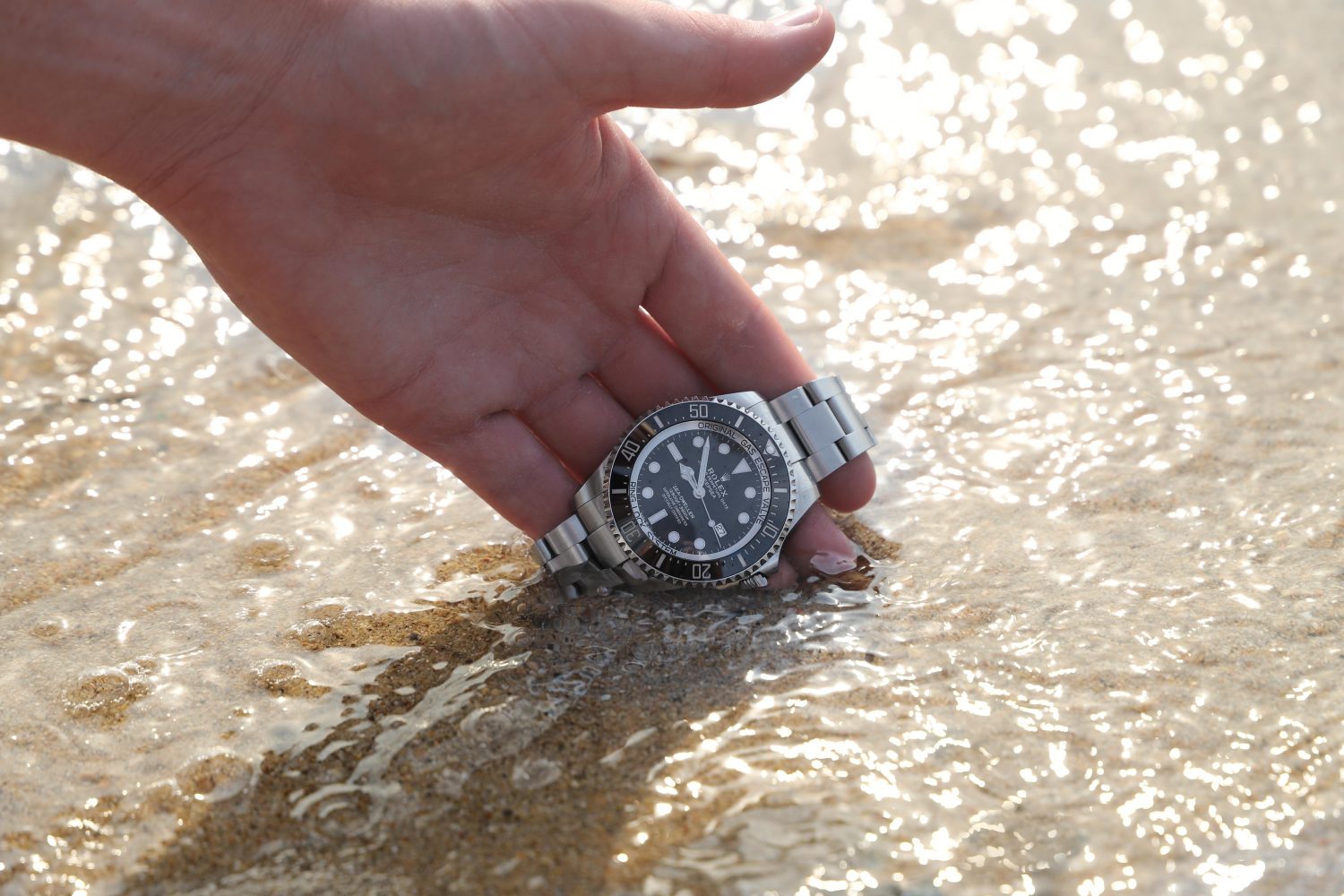
When a movement rusts, it’s game over. As such, if you get water inside of your watch, it’s crucial that you take it to a watchmaker to have it serviced immediately and not let rust develop.
If your watch isn’t water resistant, then you need to keep your watch away from any water at all costs, because even a few drops may find their way into the watch and make huge damages to the movement.
A problem with watches that don’t have a very high water resistance and having it come in contact with water, especially warm and steamy water from the shower, is that the water (in particular warm water) tends to wear out the sets faster. When the seals run dry, there’s a greater risk of leakage and thus damaging your watch.

Dive watches water resistance
Dive watches are called dive watches for a reason, and from these watches, you expect great water resistance, since, after all, they’re made for diving. Now, this does not only include dipping the watch in the water for a few seconds, but it means being able to withstand water pressure over a longer period of time.
In order to qualify for a dive watch, the watches have to pass numerous tests. These tests are meant to approve that the watches are suitable for repeated usage in a given depth and include safety margins to take factors into account like the aging of the seals, the properties of water and seawater, rapidly changing water pressure and temperature, as well as dynamic mechanical stresses encountered by a watch.
Furthermore, a diving watch also needs to be tested for water resistance at a water overpressure as it is officially defined.
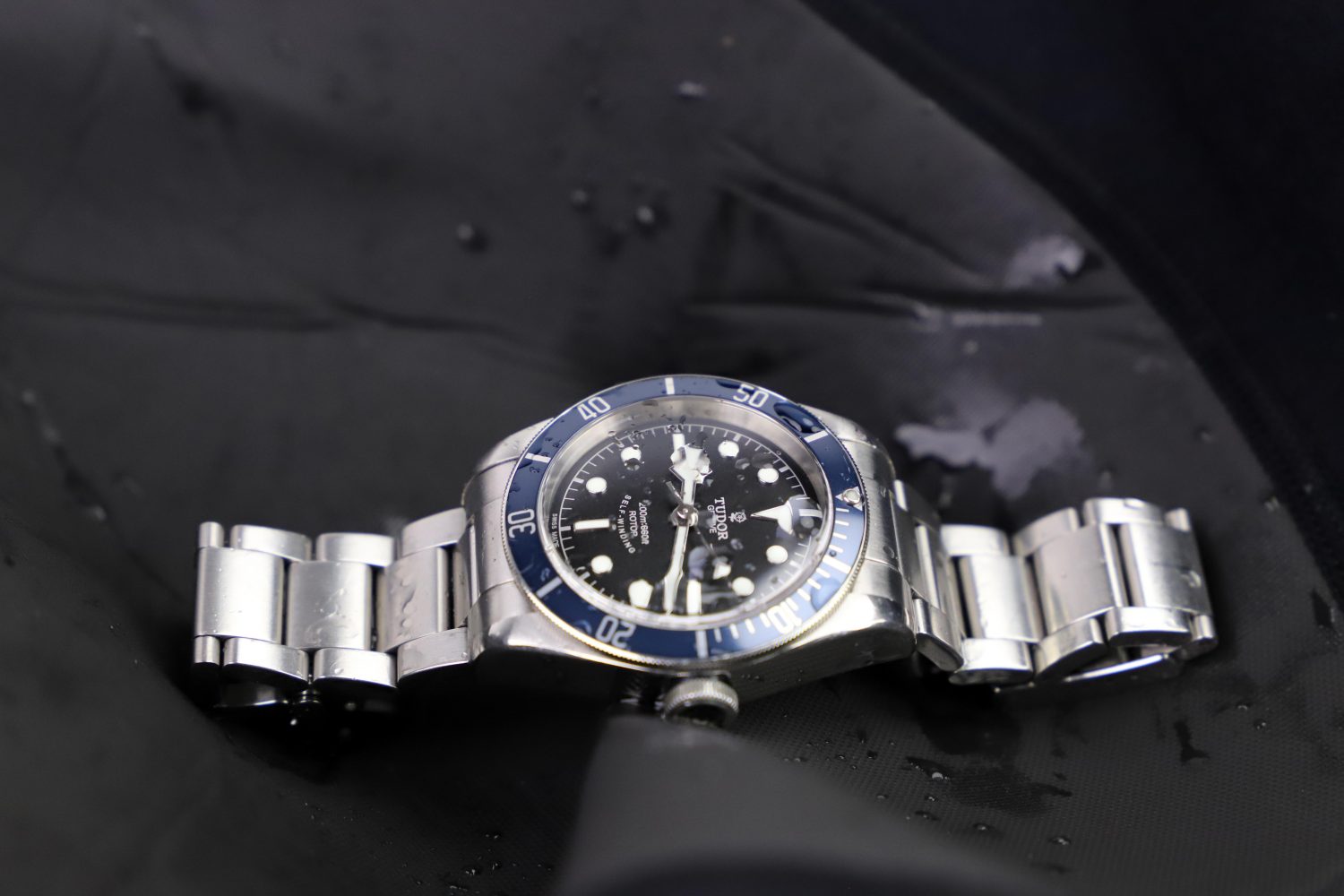
When testing the diving watch, the manufacturer tests the watch in a diving chamber with a diver diving in a pressurized environment, breathing a gas mixture.
When the diver breathes this gas mixture, the watch is also subject to the gas, and this means that its functioning can be disturbed. This is why this needs to be checked as well.
When it comes to dive watches, they need to meet these additional requirements in order to be suitable for diving:
The watch needs to be able to withstand the overpressure of gas which is used when diving. It should also manage a rapid reduction in pressure to atmospheric pressure.
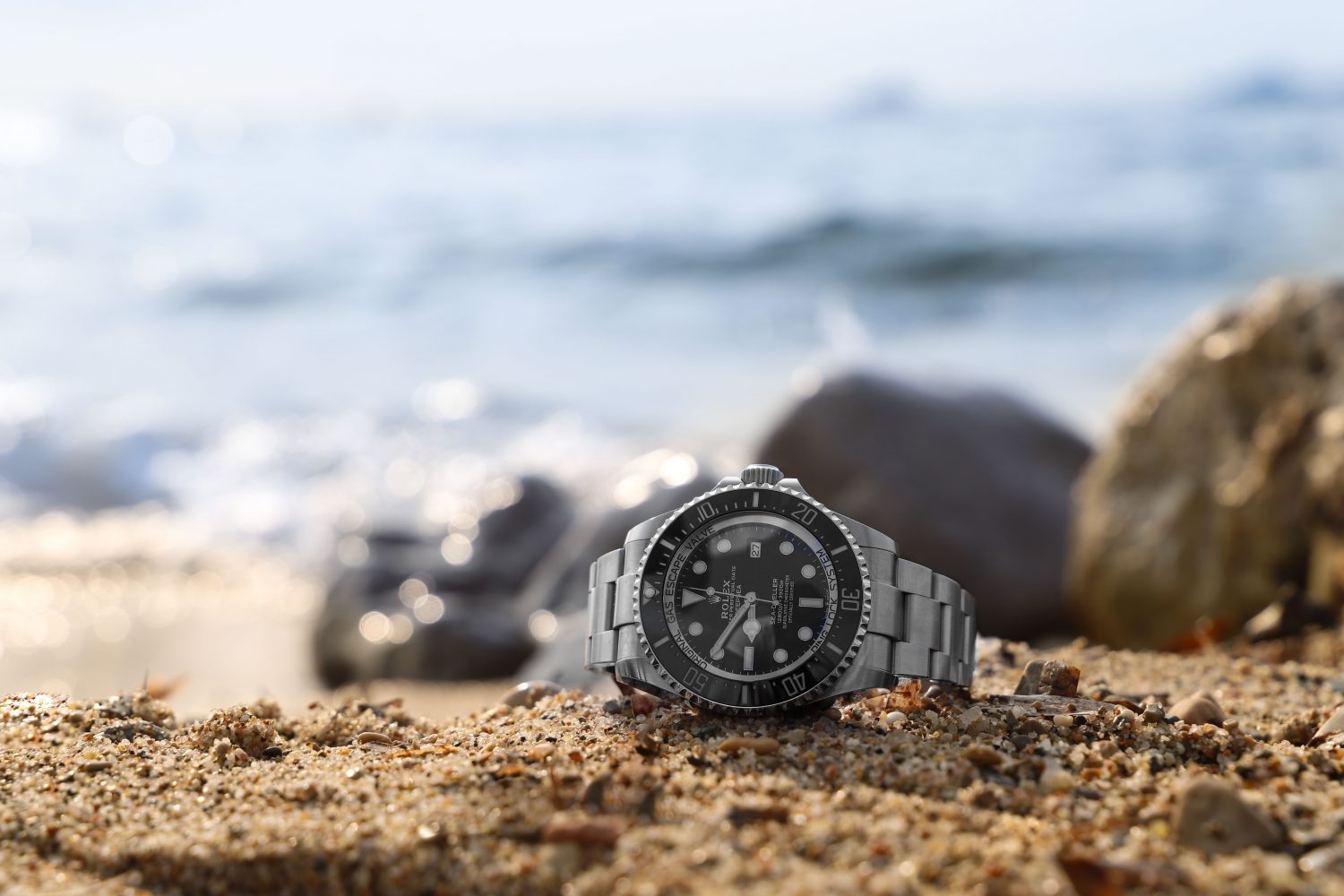
After this, the watch needs to work properly.
Furthermore, a dive watch needs to have a test by internal pressure which is a simulation of decompression. In this test, the crown is removed together with the winding and/or setting stem. Then, a crown of the same type is fitted with a hole, and through this hole, a gas mixture will be used to create an overpressure of the rated pressure/20 bar in the watch for a period of 10 hours.
Marking. Watches used for mix-gas diving which satisfy the test requirements are marked with the words “DIVER’S WATCH xxx M FOR MIXED-GAS DIVING”. The letters xxx are replaced by the diving depth, in meters, guaranteed by the manufacturer. The composition of the gas mixture used for the test shall be given in the operating instructions accompanying the watch.
Most manufacturers recommend divers have their diving watch pressure tested by an authorized service and repair facility annually or every two to three years and have the seals replaced.

Standardization of water-resistant watches
In order to make water-resistance of watches more reliable and an equal measurement of a watch’s water resistance, The International Organization for Standardization issued a standard for water-resistant watches. This standardization also prohibits the term waterproof to be used with watches, which many countries have used.
Standardization was introduced in 1990. This standardization was made for watches that were built for daily use and were water-resistant for short periods of time during exercises such as swimming. In other words, worn when the pressure varies.
What does water resistance mean?
Now, on watches, you can read a number that refers to the water resistance of a watch, but what does this number actually mean? Since it clearly does not refer to the exact meters to which the water can be submerged.
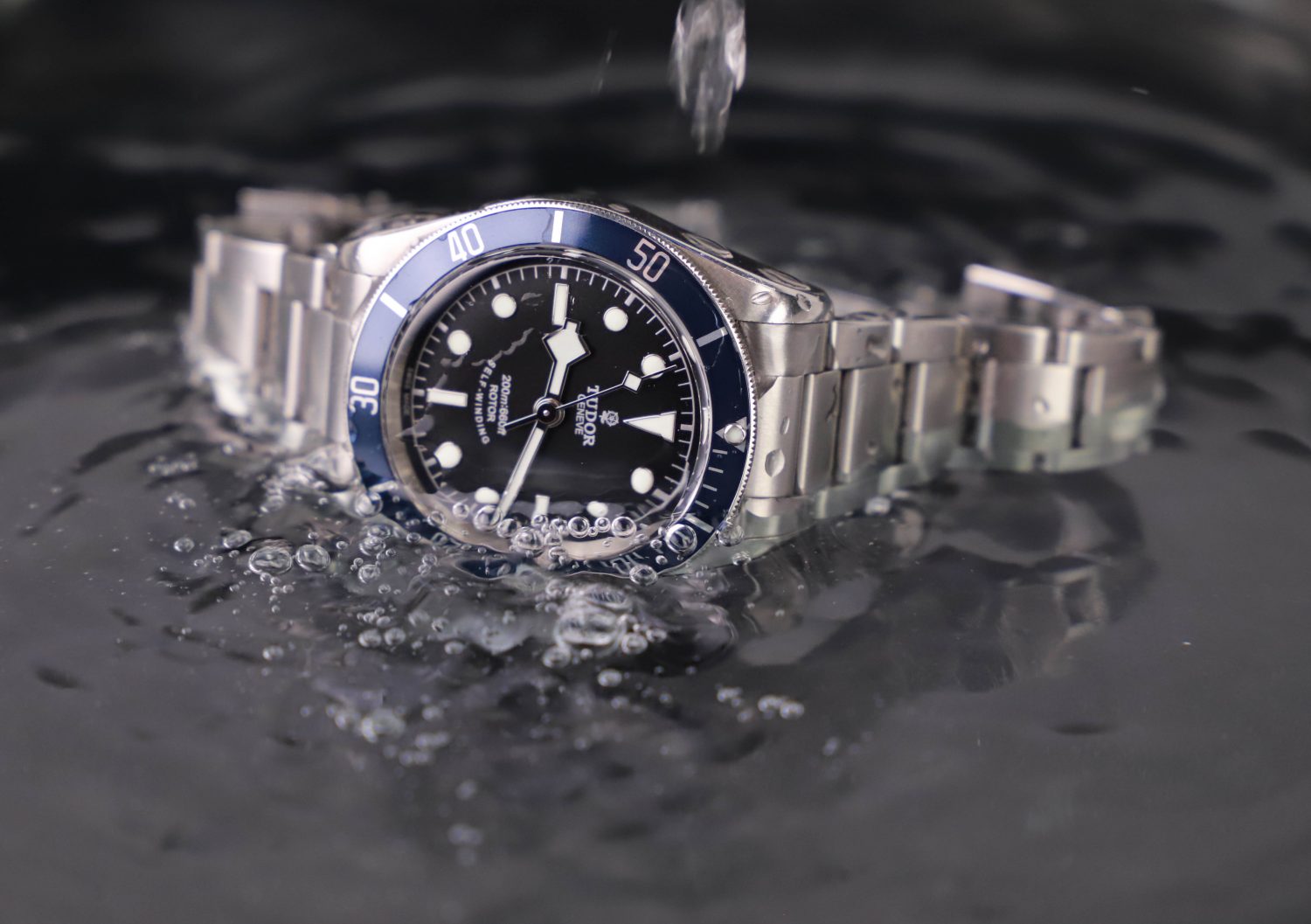
Water Resistant 30 Meters / 3 Atmospheres / 3 Bar
When a watch says that it is water resistant using any of the above ”terms”, it means that the water is suitable for everyday wear, but it is not suitable for diving, swimming, showering, or doing any water-related activity. At max, a watch that is 30-meter watch resistant is essentially just splash resistant, however, all contact with water should be avoided.
Unlike what many people think, it doesn’t mean that you can go swimming with it to a depth of 30 meters.
Now, this does not mean that your watch won’t handle being submerged underwater, however, the risk of the watch leaking is not non-existent.
Water Resistant 50 Meters / 5 Atmospheres / 5 Bar
When a watch is 50 meters water resistant, it means that it is suitable for everyday use, and can handle splash from water or rain.
It also means that the watch is not suitable for swimming or showering, however, it is possible to swim with these watches, but you should minimize exposure to the water, and ideally, you shouldn’t swim with these watches – even if they in theory can handle water.
Water Resistant 100 Meters / 10 Atmospheres / 10 Bar
When you’ve got a watch with a water resistance of 100 meters, you’ve got a watch that can actually handle water relatively well. It can be used when snorkeling, swimming, and doing other water sports, however, it is not suitable for diving. A watch with this water resistance can be underwater for a longer period of time, but diving should be avoided.
Water Resistant 200 Meters / 200 Atmospheres / 20 Bar
When you’re looking at 200 meters, you’re looking at a dive watch, made for the purpose. These are suitable for scuba diving at depths, however, these watches are not suitable for saturation diving.
Watches with a water resistance of 100m or 150m are normally older watches since the standard has now gone more toward 200meters. This is because 100 meters is not quite enough to call itself a proper, serious dive watch.
Water resistant 200 Meters / 20 atmospheres / 20 Bar
Watches with a water resistance of 200 meters are serious dive watches, made for the purpose. These watches are suitable for all types of water sports and can be submerged in water for a longer period of time. These are also suitable for skin diving.
But while 200 meters sounds a lot, ideally, you shouldn’t submerge such a watch more than a couple of ten meters.
With a watch with this water resistance, you can swim how much you want without having to worry. Just make sure you screw down the crown.
Water Resistant 300 Meters / 300 Atmospheres / 30 Bar
Now we’re talking serious dive watch. These watches are suitable for mixed-gas diving and for saturation diving in a helium-enriched environment.
When a watch has 300 meters, you can go swim however much you want, and unless you’re a professional diver, you probably won’t get close to the watch’s breaking point in depth.

Pressure test your watches
Now, it’s important to point out that just because the dial or case back of your watch says a certain meter doesn’t mean that your watch is suitable for the activities listed below respective water resistance.
Over time, the seal of watches will dry out and thus not keep the watch water resistant anymore. As such, you want to pressure test your watches regularly, for example, once a year to make sure they’re good to go.
Your watch has different ”leaking points” where it can leak, and if just one of these is not completely sealed, your watch won’t be water-resistant.
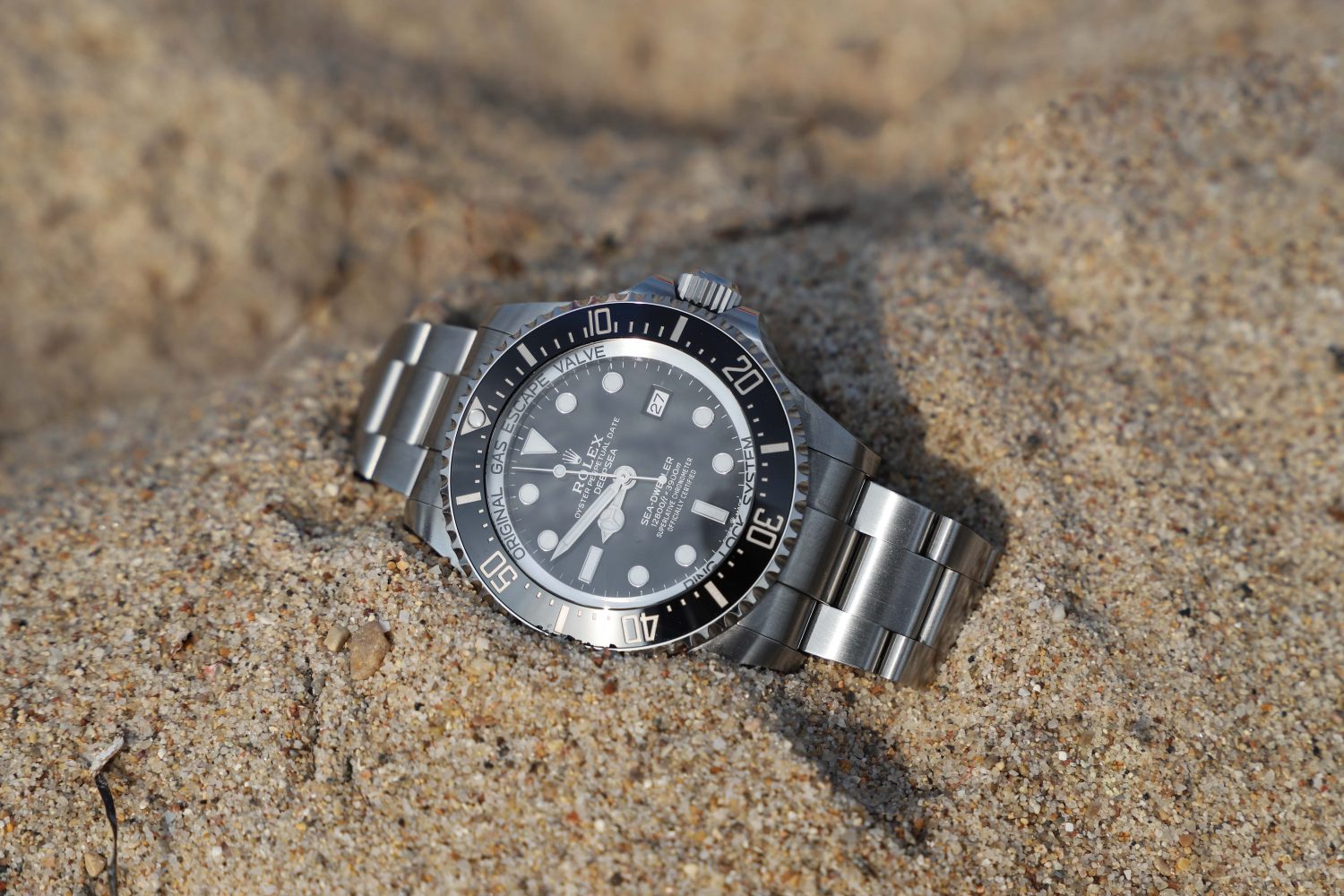
Of course, for vintage watches, it is even more important that you have them pressure tested on a regular basis since they are more prone to leaking, but on the flip side, many people would argue that you shouldn’t come anywhere near water with your vintage watches. Many people argue that you shouldn’t even pressure test your vintage watches.
Diver’s or ISO 6425
Watches that are marked either “ISO 6425” or “Divers”, you know you’re dealing with a serious dive watch. These watches are certified up to a standard. Watches with this marking can also handle significant shocks, magnetic, and saltwater. They should also offer great legibility even in complete darkness.




